Star Wars Galaxy Map & All Regions Explained
Table of Contents
From Tatooine to Coruscant, from Mustafar to Exegol, here is your ultimate guide to the Star Wars galaxy – it’s grown since 1977!
You Are Reading :Star Wars Galaxy Map & All Regions Explained
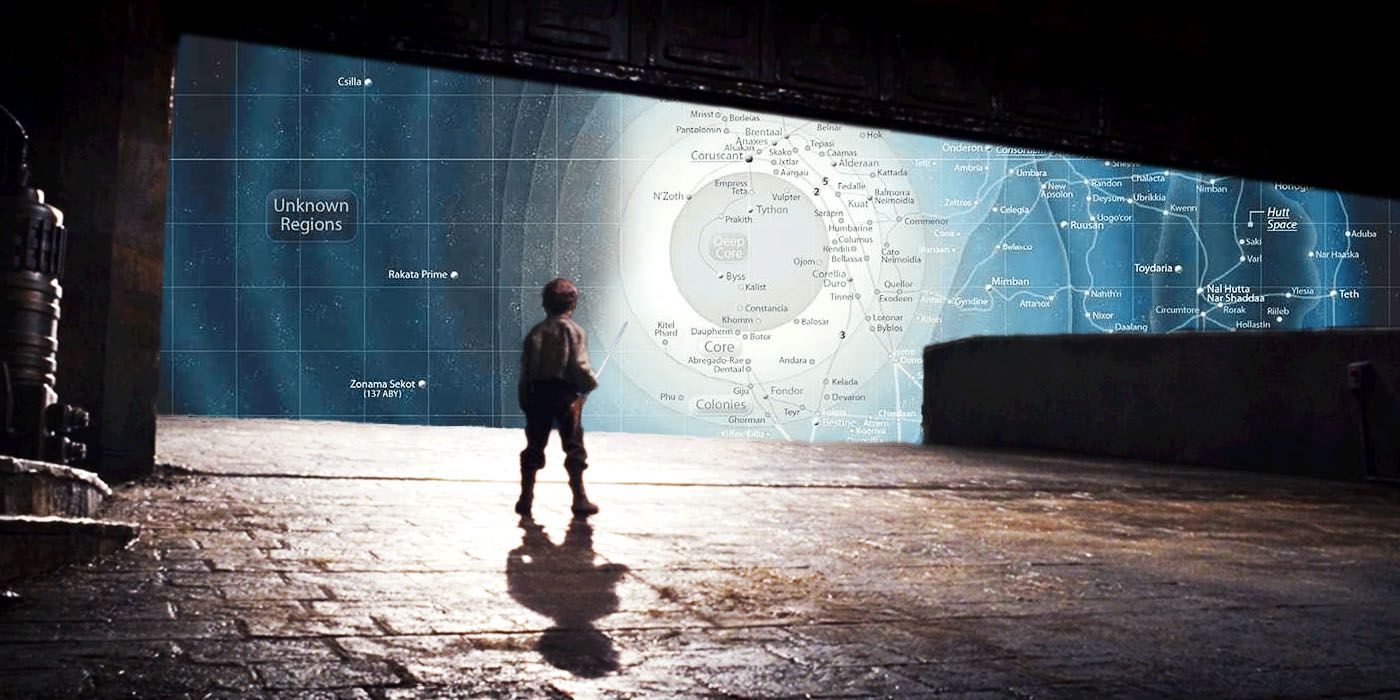
Here’s your ultimate guide to the Star Wars galaxy map, and all its regions. In 1977, George Lucas welcomed viewers to a galaxy far, far away. Audiences had no idea they were being introduced to a galaxy that would continue to grow for decades, across a wide range of media: films, TV shows, comic books, novels, and video games. Star Wars swiftly became a massive, thoroughly immersive transmedia franchise, with countless writers making their own unique contribution to the galaxy in the so-called “Expanded Universe.”
And then, in 2012, Lucasfilm was purchased by Disney. The House of Mouse chose to strip the canon and continuity down to its bare elements, simply to create more storytelling opportunities. Fortunately they chose not to change what is sometimes called the “infrastructure EU,” including the basic galaxy map. Lucasfilm has taken something of a “softly-softly” approach, avoiding defining history where they do not need to do so in order to avoid tying a future storyteller’s hands, but the basic geography can be assumed to be the same. In fact, in discussion on TheForce.net’s Jedi Council Forums, well-respected author Jason Fry revealed he proposed a more drastic approach, but Lucasfilm rejected it.
The old Expanded Universe claimed that the Star Wars galaxy has roughly 1 billion inhabited star systems, and there’s no reason to assume things are any different in canon. That means writers have tremendous creative freedom when it comes to exploring the galaxy; they can use previously-established locations, or they can simply create new worlds. Many writers are particularly delighted to do the latter, because they get their chance to leave an indelible mark on this beloved galaxy far, far away. Still, even if new worlds are constantly being created, the basic galaxy map will stay the same. So here’s everything you need to know.
The Star Wars Galaxy Map Explained
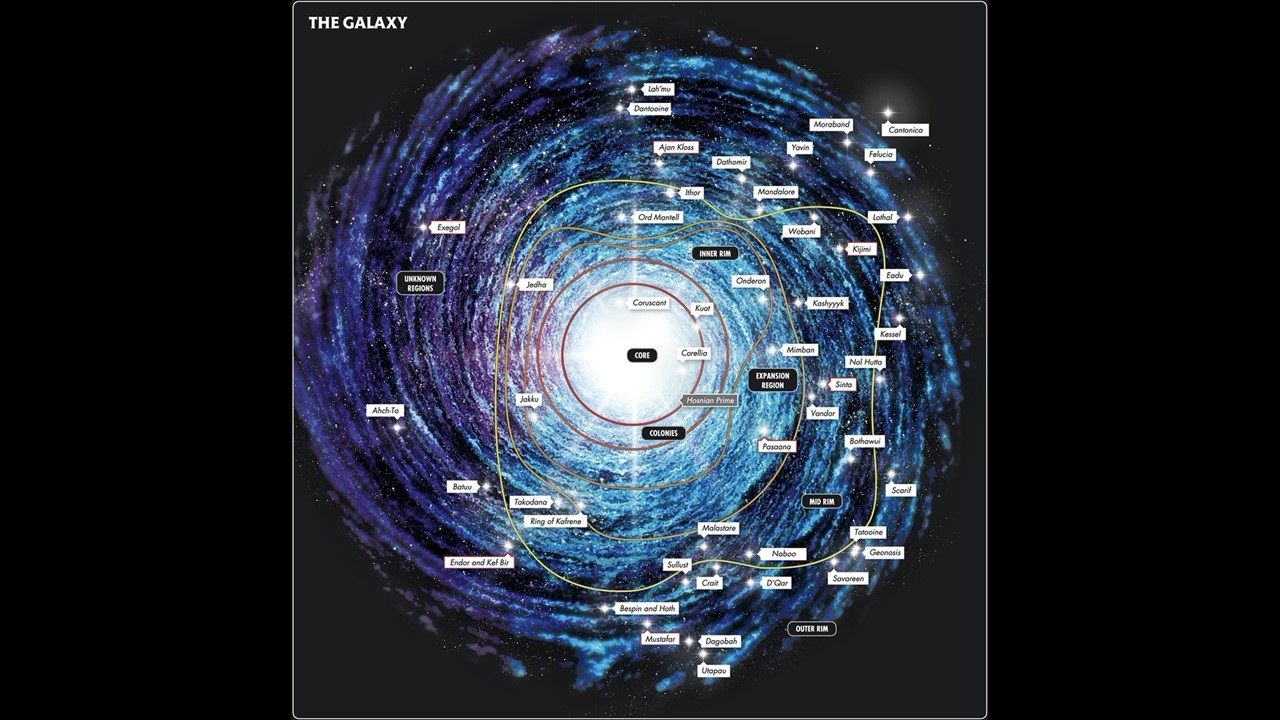
The standard Star Wars galaxy map is divided into several sectors, sweeping out from the Galactic Core, which is the birthplace of galactic civilization. Most travel and trade takes place via specific hyperspace lanes – preprogrammed routes where there are no gravitic anomalies to drag a ship out of hyperspace. Note that the left side of the galaxy is much less explored than the right, due to a high prevalence of gravitic anomalies in that region of space. Most Star Wars galaxy maps subdivide space into nine distinct sectors (although some older maps include an area in the Outer Rim called “Hutt Space”). Here’s a full exploration of each region.
The Deep Core
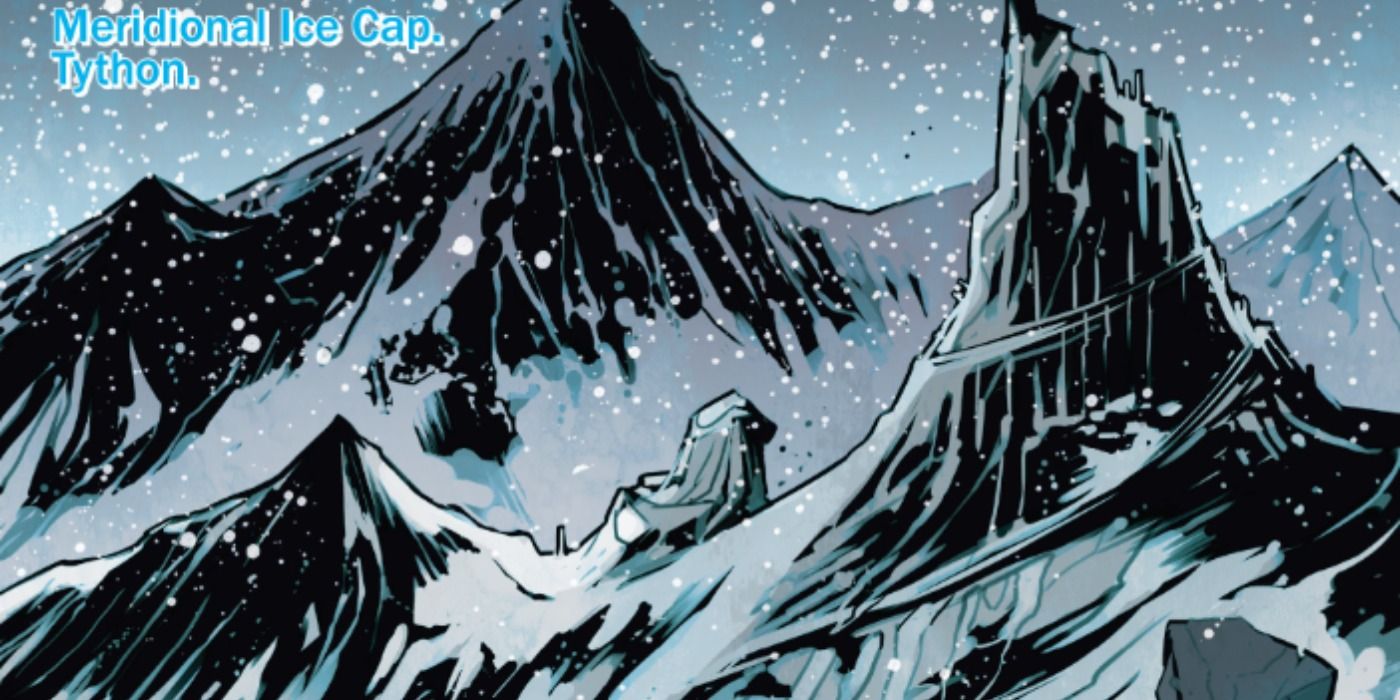
Like most (possibly all) spiral galaxies, a black hole lies at the center of the Star Wars galaxy. This supermassive black hole warps spacetime around it, leading to a turbulent core region where hyperspace travel is very difficult indeed. Although both the Empire and the Rebel Alliance mapped hyperspace routes into the Deep Core, the gravitic fluctuations likely mean these would be viable for only a few years, centuries at most. Even skilled Force-sensitive pilots like Luke Skywalker are justifiably worried when they enter the deep core, which is sparsely populated as a result.
One of the most important planets in the Deep Core is Tython, site of one of the first Jedi Temples. Given the instability in the region, it’s likely the Jedi discovered this world using the Force power known as Skywalking. The ancient temple at Tython – a confessional – endured into the Imperial era, but was destroyed when Doctor Aphra tricked Darth Vader into visiting it in order to draw him away from the Rebellion.
Key worlds seen in canon:
- Tython, site of an ancient Jedi Temple
The Core Worlds
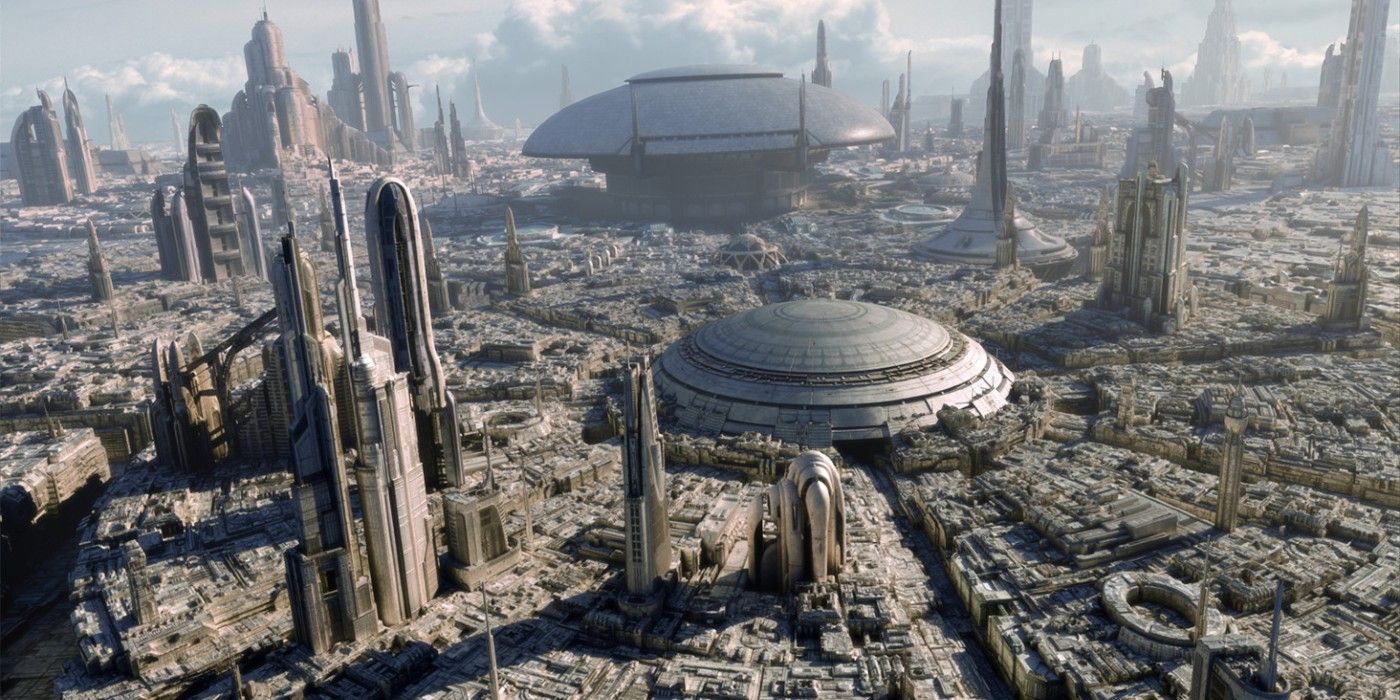
The Galactic Core is an area of cosmic stability and economic prosperity, and it is generally believed the human race evolved on the Core World of Coruscant. The region is densely populated, with a number of city-worlds such as Coruscant and Corellia, and it is known for an impressive and remarkable number of major shipyards. The Core’s prosperity led to these worlds becoming politically dominant in the Old Republic, and over time the Sith ensured this became a major source of galactic inequality. It ultimately led to the Clone Wars, although most of the battles in that conflict were fought far from the Galactic Core.
The Core Worlds were generally pro-Imperial in philosophy, largely unaware of the Empire’s atrocities. That fact explains why the destruction of Alderaan was so significant, especially coming straight after the dissolution of the Imperial Senate; this was the first time many Core World inhabitants saw the Empire for what it truly was. It’s hard not to conclude the Empire overreached when it destroyed such a prominent Core World, and worse still Imperial forces attempted to complete the atrocity by hunting any surviving Alderaanians in an attempt to render the race extinct.
The nascent New Republic initially established its capital on Mon Mothma’s homeworld of Chandrila, but eventually settled on Hosnian Prime. Unfortunately many Core Worlds remained under the influence of Imperial philosophy even during the time of the New Republic, and several of these banded together into a political group known as the Centrists. The Centrist bloc ultimately seceded from the New Republic and formed the political front of the First Order. Hosnian Prime shared Alderaan’s fate, destroyed by Starkiller Base immediately before the First Order launched a blitzkrieg across the galaxy.
Key worlds seen in canon:
- The city planet of Coruscant, traditionally galactic capital, seat of the Empire’s power.
- Alderaan, homeworld of Bail Organa, adopted homeworld of Princess Leia, destroyed by the Empire.
- Chandrilla, homeworld of Mon Mothma, a key figure in the Rebel Alliance.
- Corellia, Anaxes, and Kuat, three of the galaxy’s most important shipyards. Anaxes was destroyed during the Dark Times, in an unrevealed catastrophe.
The Colonies
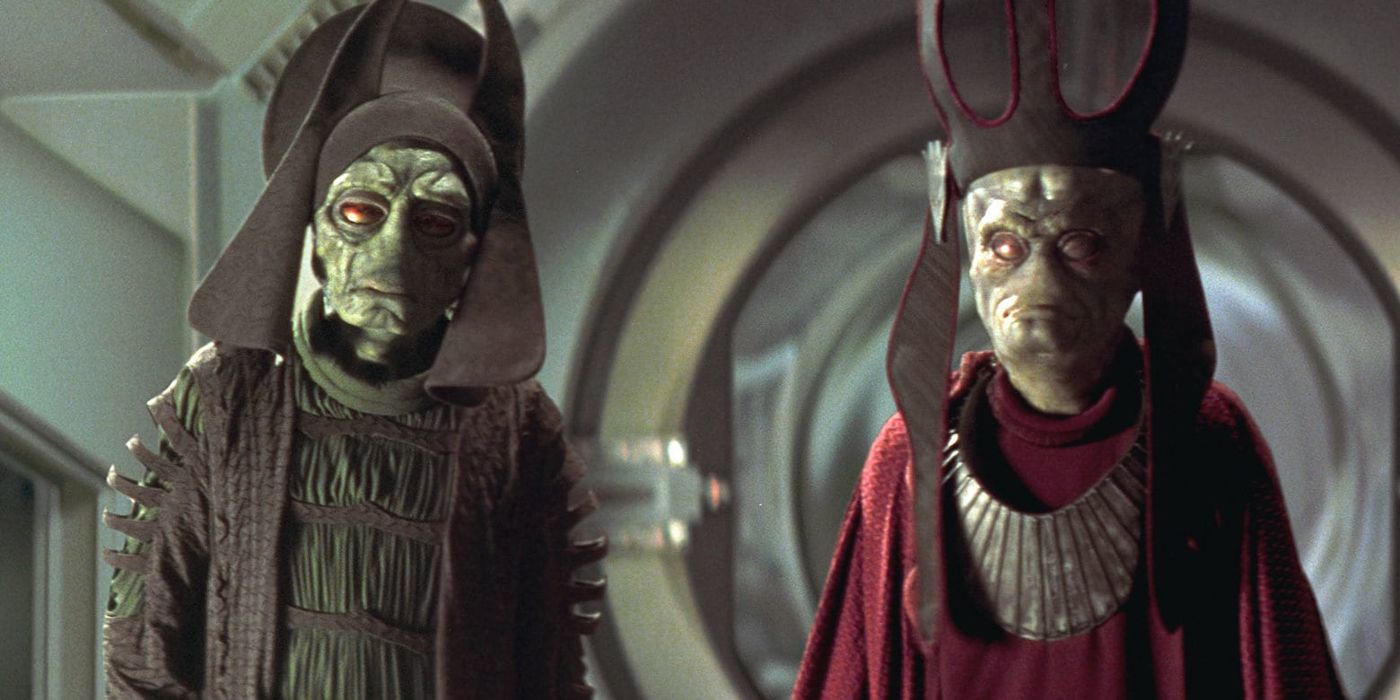
The area of space known as the “Colonies” encircle the Core, and are noted for major hyperspace routes that allow them to prosper due to their ties to the Galactic Core. One of the most notable worlds in this region is Cato Neimoidia, base of the Trade Federation, who became increasingly influential in the years before Star Wars: Episode I – The Phantom Menace. The Trade Federation avoided censure for its blockade of Naboo, and sold arms to both sides during the Clone Wars, until they were eventually forced to choose the Separatist side. Their leaders were slaughtered by Anakin Skywalker in Star Wars: Episode III – Revenge of the Sith, and the Trade Federation was subsequently nationalized. The Empire seems to have established a significant presence in the Colonies, taking advantage of its hyperlanes to set up major Imperial Academies on worlds such as Carida.
Key worlds seen in canon:
- Carida, site of a prestigious and celebrated Imperial Academy.
- Cato Neimoidia, homeworld of the Trade Federation.
- Devaron, a jungle world seen in Star Wars: The Clone Wars that is home to the Devaronians and site of a prominent Jedi Temple.
- Castell, site of one of the Emperor’s secret Observatories.
The Inner Rim
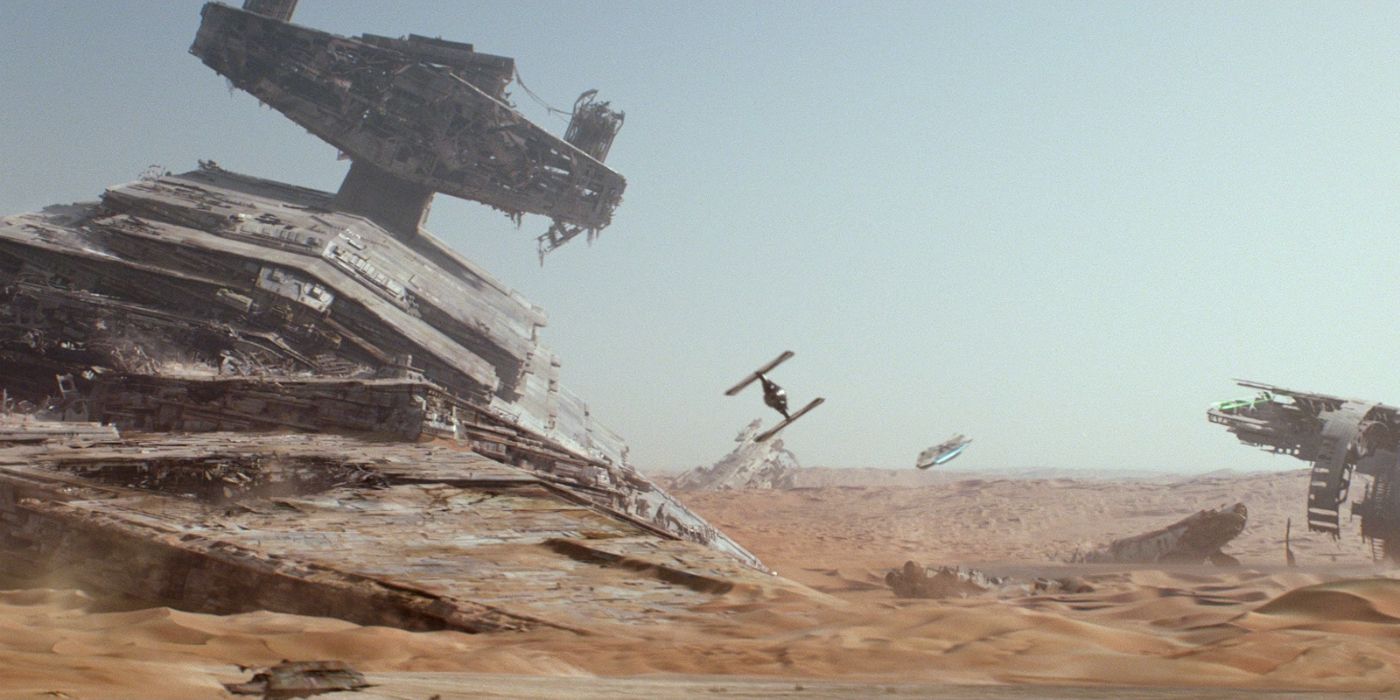
For centuries, the area of space known as the Inner Rim marked the frontier of galactic civilization. Worlds in the Inner Rim were settled by colonists from the Core, but their distance from the center of the galaxy meant they were essentially self-sufficient, and they were frequently quite lawless. The Inner Rim was heavily affected by the Clone Wars, with worlds such as Onderon joining the Separatists, and Anakin Skywalker and Obi-Wan Kenobi were themselves dispatched to this sector of space on many missions.
The Empire initially struggled to police the Inner Rim, with Palpatine sending Tarkin out to enforce order – in his customarily brutal fashion. Palpatine’s agents initially believed they could get away with anything in the Inner Rim because of its distance from the Core, but reports of atrocities did make their way back to the Senate, causing major political problems for Palpatine and helping fuel the Rebel Alliance. More crackdowns began shortly after the destruction of the First Death Star, but these proved counterproductive, driving many to join the Rebel Alliance. Countless battles in the Galactic Civil War were fought in this region, including the Battle of Jakku, which finally ended the conflict.
Key worlds seen in canon:
- Onderon, a jungle planet that featured prominently in the Clone Wars, homeworld of Saw Gerrera.
- Birren, an Alderaanian colony that was dear to the Organa family. Bail Organa left a secret message with the royal family of Birren for his daughter, as seen in Claudia Grey’s novel Bloodline.
- Jakku, site of the final battle between the New Republic and the Empire, also home to one of Palpatine’s Observatories. Rey was brought up on Jakku, only leaving the planet in Star Wars: The Force Awakens.
The Expansion Region
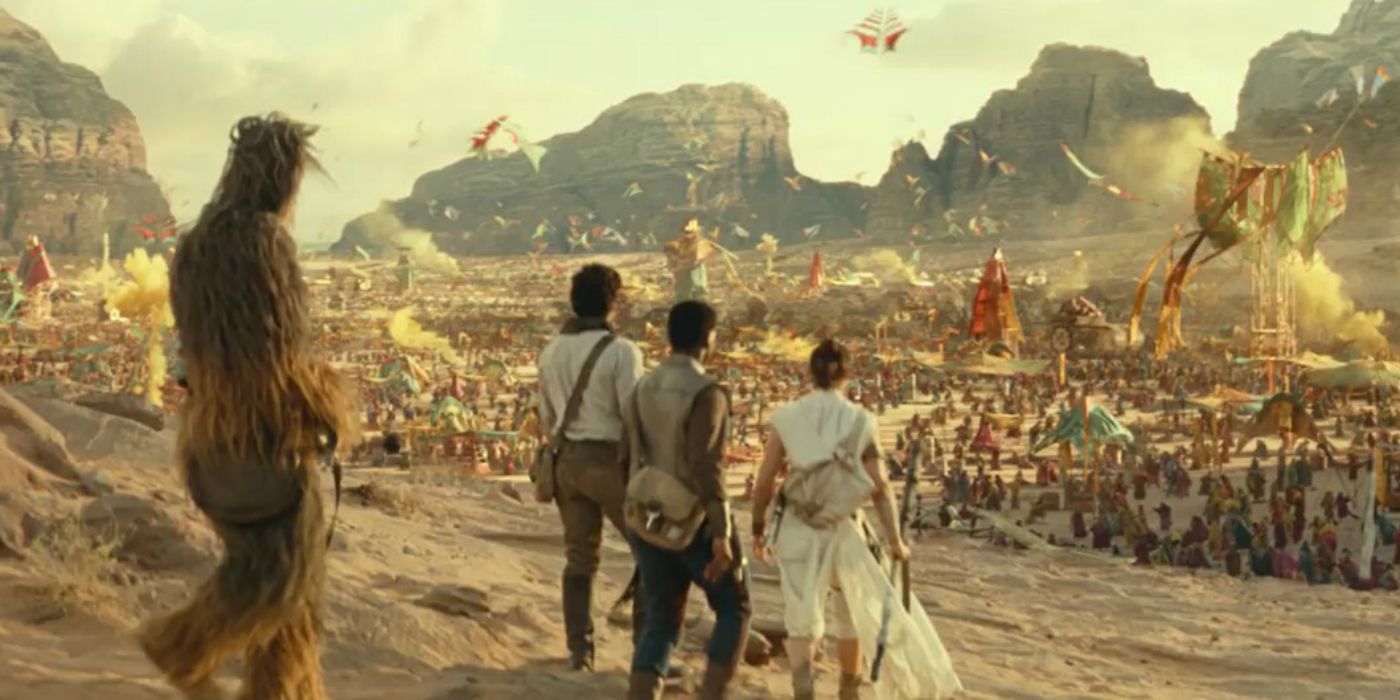
Situated between the Inner Rim, and the Mid Rim, the Expansion Region was site of some of the most brutal battles of the Clone Wars. One of the most intriguing locations in the Expansion Region is the Ghost Nebula, a sector of space separated from the rest of the galaxy by an occluding space cloud. It is home to the Umbarans, a race who are sometimes referred to as the “Shadow People,” and who became a major force in the Separatist movement. Umbaran technology exceeded galactic standard, making them a force to be reckoned with, but the Empire absorbed their science. Palpatine assigned one loyalist, Diles Anevi, to serve as governor of the entire Expansion Region, but he was murdered by crime lord Dryden Vos in Solo: A Star Wars Story. Little is known of the Expansion Region during the Galactic Civil War or in the post-Return of the Jedi era, although the planet Sibensko gained a reputation as a crime haven.
Key worlds seen in canon:
- Mimban, a swamp world that served as a battleground during the Clone Wars and the Dark Times, as seen in Solo: A Star Wars Story. Charles Soule’s The Rise of Kylo Ren miniseries revealed it is site of an ancient Jedi Temple, with a mysterious and venerated Force artifact called the Mindsplinter.
- Umbara, site of a prolonged conflict during the Clone Wars.
- Pasaana, visited by Rey and her Resistance allies in Star Wars: The Rise of Skywalker.
The Mid Rim
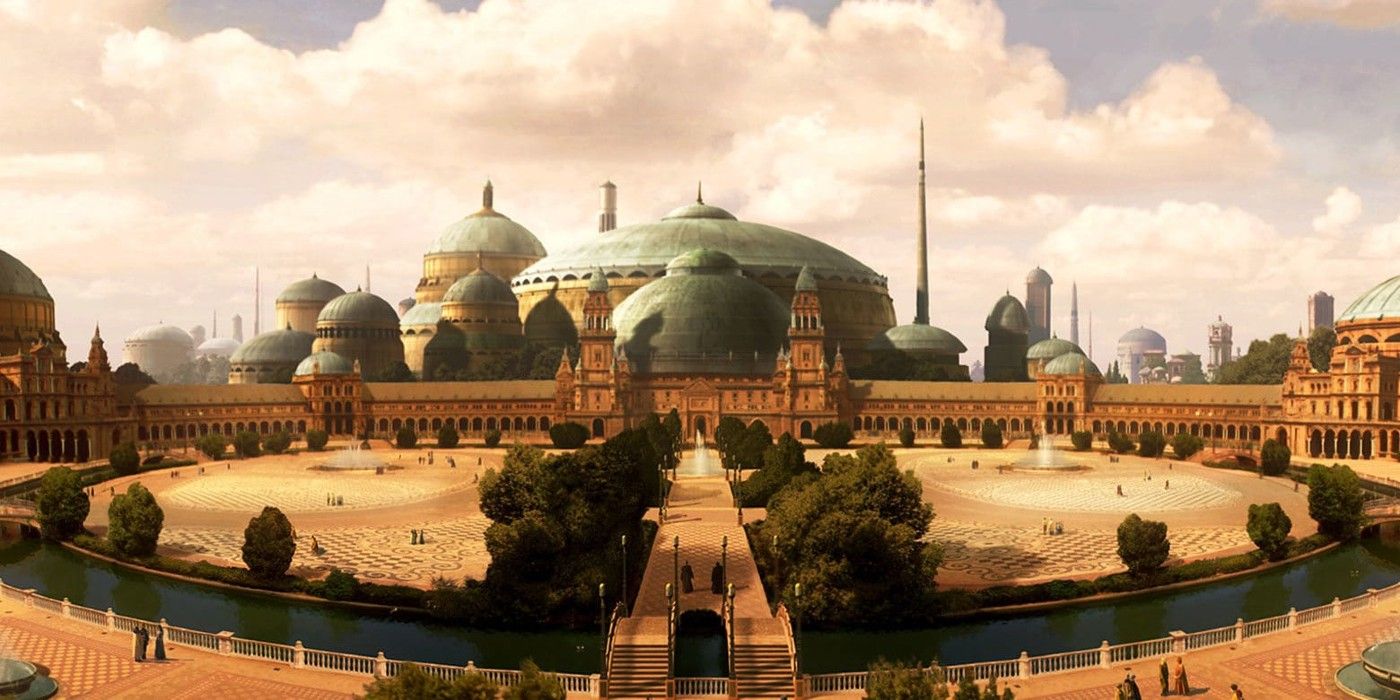
Moving on through the Star Wars galaxy map, the next roughly concentric circle is known as the Mid Rim. This area of space was caught up in the conflict between the Sith Empire and the Old Republic roughly a thousand years before the events of Star Wars: Episode I – The Phantom Menace, and ancient structures dating from this time can still be found on many worlds, including Maz Kanata’s castle on Takodana. The Mid Rim earned a reputation for peace and tranquility, with many stable and long-lived governments – but that peace was shattered when the Trade Federation blockaded Naboo, and within a decade the Mid Rim had become caught up in the Clone Wars. The majority of the battles fought in Star Wars: The Clone Wars take place in the Mid Rim, with Anakin Skywalker and Obi-Wan Kenobi participating in conflicts on or around worlds such as Malastare, Bothawui, and Ord Mantell.
Crime flourished in the Mid Rim during the Imperial era, with smugglers like Tobias Beckett and Han Solo finding many opportunities to line their pockets. The Mid Rim subsequently became a major area of Rebel activity, with early Rebel cells led by the likes of Enfys Nest, Hera Syndulla, and Saw Gerrera. When the Galactic Civil War broke out after the destruction of Alderaan, several systems of the Mid Rim once again found themselves becoming battlefields, including Haidoral Prime, Coyerti, and the Chosetta System. Many of these worlds subsequently joined the New Republic.
Key worlds seen in canon:
- Takodana, which became Maz Kanata’s home until Star Wars: The Force Awakens.
- Naboo, homeworld of Palpatine and Padmé Amidala, which played a prominent role in the prequel era.
- The Wookiee homeworld of Kashyyyk was site of sustained conflict during the Clone Wars, and its inhabitants were enslaved by the Empire until shortly before the Battle of Jakku.
- The Temple Moon of Jedha was an ancient site of pilgrimage, but it was destroyed by the Death Star in Rogue One: A Star Wars Story.
- Kijimi remained a hive of criminal activity until Star Wars: The Rise of Skywalker, when it was destroyed by the First Order.
The Outer Rim
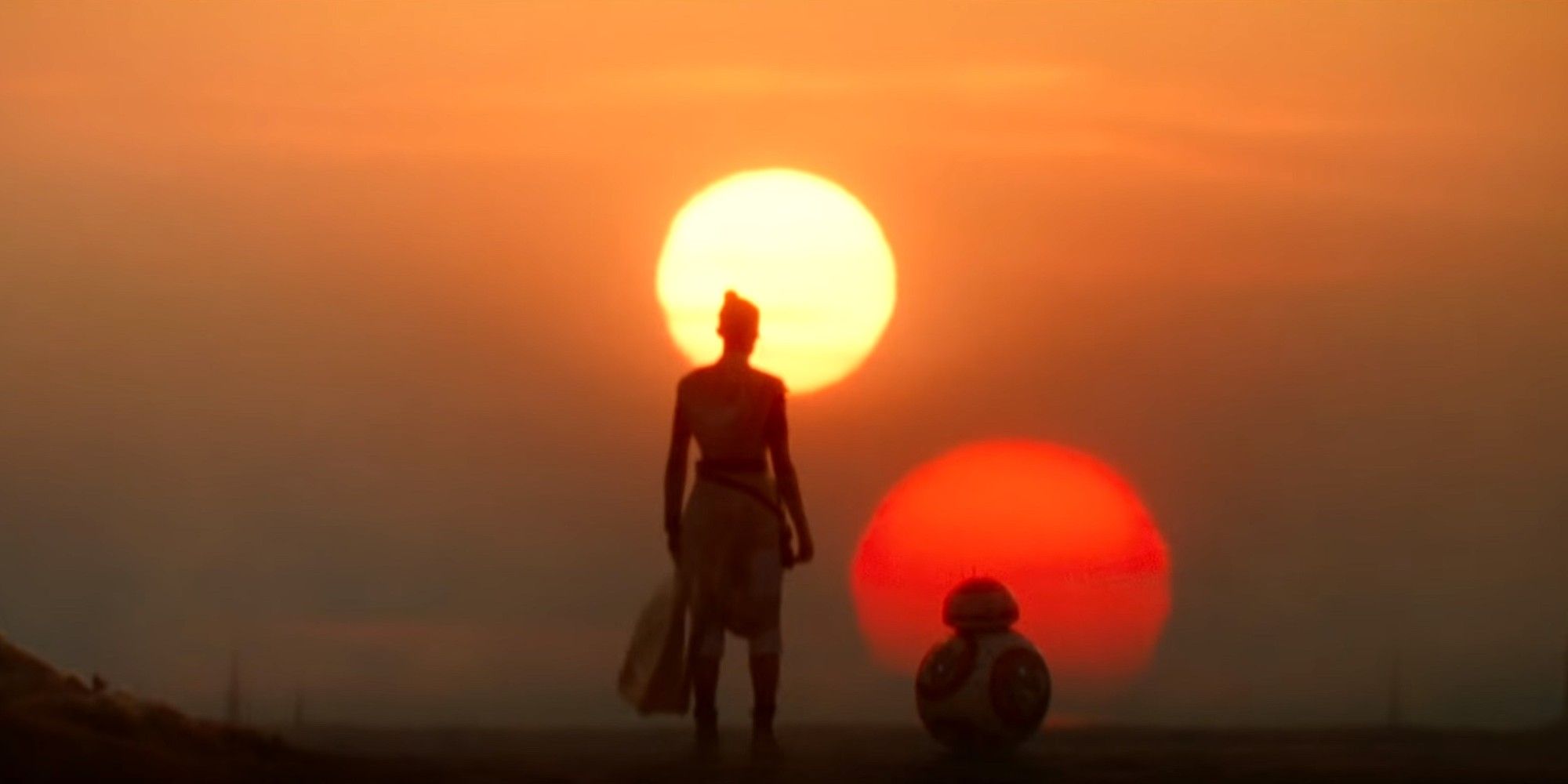
“If there’s a bright center to the universe,” Luke Skywalker complained of his homeworld Tatooine, “you’re on the planet that it’s farthest from.” The Outer Rim worlds are distant from Coruscant and the Galactic Core, and rival galactic powers such as the Mandalorians and the Sith grew up in this sector of space. The Republic kept out of Outer Rim affairs even in more recent times, even allowing slavery to flourish on planets like Tatooine. Criminal cartels such as the Hutts and Black Sun frequently achieved dominance over entire worlds and star-systems, and the Empire allowed this to continue with its blessing. The Death Star was constructed in the Outer Rim, far from the attention of the Galactic Senate, and countless battles in the Galactic Civil War were fought in this sector of space. Many notable Rebel Alliance bases were situated in the Outer Rim, including Echo Base on Hoth.
Although some planets such as Akiva joined the New Republic, in general this sector of space was left to fend for itself, with self-appointed “Marshals” policing planets such as Tatooine and Nevarro. Leia Organa headed back to familiar locations in the Outer Rim when she began to establish the Resistance, anticipating the coming conflict with the First Order. There’s increasing evidence Imperial Remnants retreated to this sector of space, with Moff Gideon commanding an Imperial fleet in the Outer Rim in The Mandalorian.
Key worlds seen in canon:
- Tatooine is the most famous Outer Rim world, homeworld of both Anakin and Luke Skywalker. It was under the control of Jabba the Hutt until Return of the Jedi, and slavers attempted to take it over after Jabba’s death. They were repelled by Marshal Cobb Vanth.
- Mandalore was center of a proud warrior race who battled the Jedi millennia ago, and the Mandalorians kept the galaxy at arm’s length until the Clone Wars. The Empire purged Mandalore, with the natives scattered across the galaxy.
- Moraband, sometimes called Korriban, is the homeworld of the Sith.
- The volcanic world of Mustafar was ravaged by an ancient dark side ritual, and became venerated by the Sith. Darth Vader executed the Separatist leaders on Mustafar, and was defeated in a duel with Obi-Wan Kenobi. He subsequently made Mustafar his home.
- The Clone Wars began on the Outer Rim planet Geonosis in Star Wars: Episode II – Attack of the Clones, and the native Geonosians were wiped out by the Empire after constructing the Death Star.
- The key Resistance bases in the sequel trilogy, D’Qar and Ajan Kloss, were both situated in the Outer Rim.
The Unknown Regions
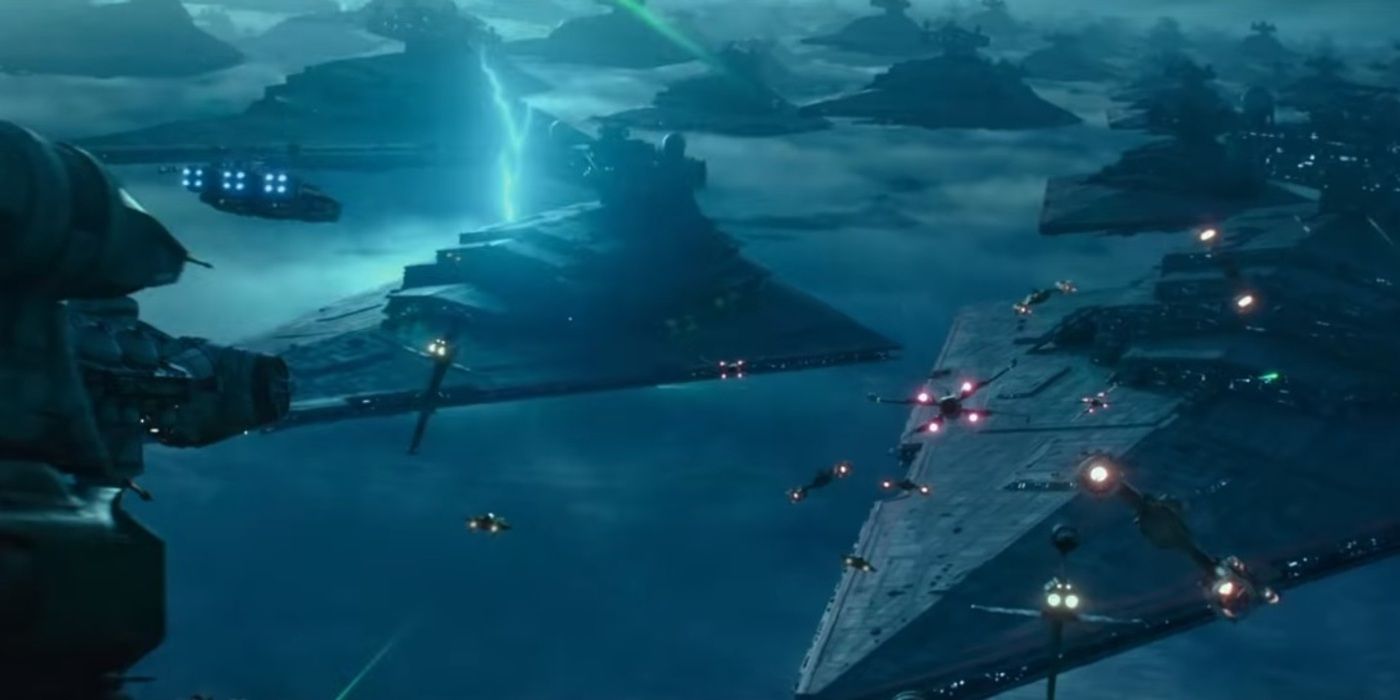
According to Chuck Wendig’s Aftermath: Empire’s End, the Unknown Regions are an “unexplored infinity… closed off by a labyrinth of solar storms, rogue magnetospheres, black holes, gravity wells, and things far stranger.” Millennia ago, the Unknown Regions were the home of the Sith Empire, until a series of chained supernova explosions sent huge masses tumbling at high speeds between the stars, some of them demolishing asteroids or whole worlds, others sparking more supernovas with their near-lightspeed impacts. They can be navigated only through use of the Force.
The Chiss are traditionally recognized as the greatest power of the Unknown Regions, although Timothy Zahn’s Thrawn Ascendancy trilogy is seeing their might challenged. Palpatine grew fascinated by the Unknown Regions when he sensed a mysterious dark side presence there, most likely the ancient Sith redoubt of Exegol, and the Empire consequently made significant inroads into them. The Empire retreated into the Unknown Regions after the Battle of Jakku, and transformed into the First Order.
Key worlds seen in canon:
- The Chiss homeworld of Csilla is still considered the center of their empire, although it has become extremely inhospitable due to global cooling.
- Ahch-To, introduced in Star Wars: The Last Jedi, believed to be the site of the first Jedi Temple.
- The ancient Sith world of Exegol is a Force vergence where the veil between life and death is thin. The Sith Eternal cult used the power of this vergence to resurrect Emperor Palpatine, until the final battle in Star Wars: The Rise of Skywalker.
Wild Space

Wild Space is a treacherous sector of unmapped star clusters, containing many mysteries. Exploration was slowed down by the Clone Wars, but picked up again during the Dark Times. After the Battle of Endor, the pirate Eleodie Maracavanya seized control of an Imperial Super Star Destroyer and used it to establish a position of dominance in Wild Space.
Key worlds seen in canon include:
- Mortis, one of the most powerful Force vergences in the galaxy, visited by Anakin Skywalker and Obi-Wan Kenobi during the Clone Wars.
- Lira San, homeworld of the Lasat, discovered in Star Wars Rebels.
Link Source : https://screenrant.com/star-wars-mandalorian-galaxy-map-regions-planets-explained/
